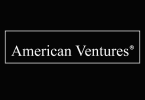Understanding the Demands of Modern Dredging
Massive dredging projects are foundational to modern infrastructure development, coastal management, and underwater excavation. These projects demand high-efficiency systems capable of transporting slurry, sediment, and debris across varied and often hostile environments. At the heart of these operations are dredge hoses — engineered components that ensure seamless slurry movement and reliable connections between dredging equipment.
As the global demand for land reclamation, port construction, and seabed mining grows, so does the reliance on advanced dredging hose systems. These hoses must endure extreme pressures, resist abrasion, and function reliably over extended periods. Their performance is vital not only for productivity but also for the safety and sustainability of dredging operations.
Contents
- 1 Overview of Dredge Hose Types and Configurations
- 2 Integration with Dredging Equipment and Systems
- 3 Performance Factors in Industrial Slurry Hoses
- 4 Designing for Large-Scale Dredging Projects
- 5 Benefits of Advanced Hose Technology in Dredging Operations
- 6 Procurement and Maintenance Best Practices
- 7 Conclusion: The Strategic Importance of Dredge Hoses
Overview of Dredge Hose Types and Configurations
Dredge hoses are not one-size-fits-all. They come in a variety of types and configurations, each tailored to specific dredging tasks and environmental conditions.
Floating Dredge Hose
Floating dredge hoses are designed to stay buoyant on the water’s surface while transporting dredged material from the seabed to the processing area or discharge point. Their design typically includes built-in floatation layers and reinforced walls, allowing for ease of maneuverability and reduced drag in marine environments.
Abrasion-Resistant Hose
Dredging often involves transporting abrasive materials such as sand, gravel, and rocks. Abrasion-resistant hoses are constructed with high-durability inner linings made of natural or synthetic rubber compounds. These linings protect against wear and extend the lifespan of the hose, making them ideal for heavy-duty slurry handling.
Marine Hose for Dredging
Marine hoses are specifically designed to perform under offshore conditions, where water pressure, salinity, and UV exposure pose serious challenges. These hoses are reinforced to handle significant mechanical stress and resist degradation from saltwater exposure, making them essential for coastal and ocean-based dredging operations.
Integration with Dredging Equipment and Systems
Dredge hoses play a central role in linking all components of a dredging system — from suction pipelines to discharge outlets. The efficiency and reliability of these connections determine the overall success of a dredging operation.
Modern dredging hose systems are engineered for compatibility with a wide array of dredging equipment, including:
- Cutter suction dredgers
- Trailing suction hopper dredgers
- Booster stations
- Floating pipeline systems
These hoses must handle high pressures while maintaining flexibility and alignment. Customizable hose lengths, flange types, and bend configurations allow them to be adapted to diverse operational requirements.
Load-Bearing Considerations for Heavy-Duty Slurry Hoses
Heavy-duty slurry hoses must withstand not only internal pressures but also external mechanical loads. These hoses are often reinforced with multiple layers of high-tensile synthetic cords or steel rings. Their robust construction prevents kinking and rupture even under harsh conditions, which is critical for maintaining uninterrupted slurry flow in large-scale dredging projects.
Performance Factors in Industrial Slurry Hoses
The effectiveness of an industrial slurry hose is judged by several performance criteria, including pressure rating, wear resistance, flexibility, and ease of maintenance.
Pressure Ratings and Inner Linings
A dredge hose’s pressure rating must match the hydraulic demands of the system. High-pressure hoses typically feature a multi-layered design with abrasion-resistant linings. Common materials for inner linings include:
- Natural rubber
- Nitrile rubber (for oil-resistant applications)
- Neoprene (for UV and ozone resistance)
Lifespan and Maintenance Intervals
Durability is key in reducing maintenance costs and operational downtime. Properly constructed dredge hoses can last for several years under normal operating conditions. However, scheduled inspections, cleaning, and real-time wear monitoring systems can significantly extend hose life and preempt unexpected failures.
Performance Comparison of Common Hose Materials
| Hose Material | Abrasion Resistance | Flexibility | Pressure Tolerance | Ideal Use Case |
| Natural Rubber | High | Excellent | Medium | General-purpose slurry transport |
| Nitrile Rubber | Medium | Good | High | Oil-contaminated slurries |
| Neoprene | Medium | Fair | Medium | Marine environments |
| Polyurethane Lining | Very High | Good | Very High | Long-distance, high-wear transport |
Designing for Large-Scale Dredging Projects
Designing hose systems for massive dredging projects involves planning for operational loads, environmental conditions, and logistical efficiency.
Key design considerations include:
- Hose Diameter: Larger diameters accommodate greater material flow but require reinforced construction.
- Flexibility vs. Strength: Flexible hoses allow easier routing, while reinforced hoses resist deformation under pressure.
- Coupling and Fittings: Quick-connect couplings and standardized flanges reduce installation time and improve system compatibility.
- Modularity: Segmenting hoses into interchangeable units simplifies replacement and scaling.
Slurry transport hoses are often integrated into modular pipeline systems that can be rapidly deployed, repositioned, or extended based on project needs. This adaptability is crucial for large-scale dredging operations that must evolve quickly in response to terrain and waterway conditions.
Benefits of Advanced Hose Technology in Dredging Operations
Recent advancements in hose technology are transforming dredging operations by enhancing durability, reducing downtime, and improving environmental compliance.
Reduced Wear and Increased Output
Innovations such as ceramic-reinforced linings and multi-layered construction reduce internal wear, allowing for continuous operation with fewer interruptions. These features are particularly beneficial when handling abrasive slurries or operating in high-pressure environments.
Downtime Reduction and System Longevity
Hoses equipped with built-in wear indicators and real-time monitoring sensors enable predictive maintenance, minimizing unplanned stoppages. Modular designs also allow damaged segments to be replaced quickly without disrupting the entire system.
Enhanced Safety and Environmental Compliance
Modern dredging hose systems incorporate features such as:
- Anti-burst layers to prevent rupture
- UV-resistant coatings for marine durability
- Eco-friendly materials for reduced environmental impact
These improvements support compliance with international dredging standards and environmental protection regulations.
Procurement and Maintenance Best Practices
To maximize the performance and lifespan of dredge hoses, industry professionals must follow best practices in both procurement and ongoing maintenance.
Vendor Selection Criteria
When sourcing dredge hoses, consider the following:
- Proven track record in supplying dredging hose systems
- Compliance with ISO and industry-specific standards
- Availability of custom designs and technical support
- Warranty and post-sale services
Installation and Inspection Tips
- Ensure proper alignment to avoid twisting and kinking
- Use protective sleeves in high-abrasion zones
- Verify pressure ratings and compatibility with system components
- Conduct visual inspections for cracks, bulges, and wear at regular intervals
Troubleshooting Common Hose Failures
| Problem | Likely Cause | Recommended Solution |
| Hose bulging | Over-pressurization | Replace with higher-pressure rated hose |
| Abrasive wear inside | Poor lining choice | Use abrasion-resistant hose |
| Cracking on exterior | UV damage or ozone exposure | Use UV-resistant material (e.g., neoprene) |
| Leakage at couplings | Faulty or worn-out connections | Replace couplings and check alignment |
Conclusion: The Strategic Importance of Dredge Hoses
Dredge hoses are far more than flexible pipelines—they are critical assets that power the success of large-scale dredging projects around the world. Whether it’s transporting abrasive slurry, withstanding corrosive environments, or maintaining continuous operation under pressure, the right hose system can significantly boost operational efficiency and reduce total lifecycle costs.
As demand for marine infrastructure, energy exploration, and land reclamation continues to rise, investing in durable, high-performance dredging hose systems is essential. By leveraging modern materials, advanced design principles, and smart maintenance strategies, organizations can ensure their dredging operations remain productive, safe, and future-ready.







